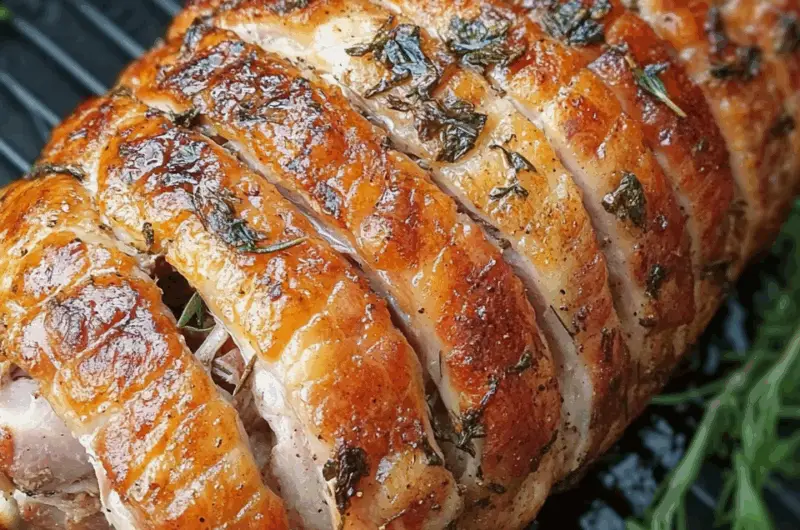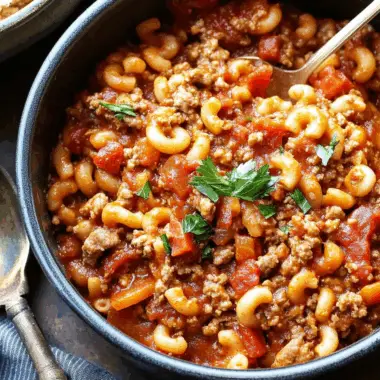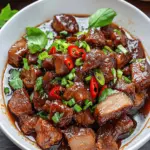What Makes Porchetta So Special
Porchetta’s charm lies in the balance between the tender, juicy meat and the crispy skin, which is achieved through slow roasting and high-heat finishing. The seasoning mix is key to its rich flavor. Fennel seeds provide a distinct anise-like note, while garlic and the array of fresh herbs create a fragrant, savory aroma that infuses the meat throughout the cooking process. This blend of flavors is complemented by the refreshing brightness of lemon zest and a hint of heat from red pepper flakes, creating a symphony of tastes that are both bold and satisfying.
The porchetta’s preparation, while time-consuming, is quite simple. It involves scoring the fat, seasoning the meat, and slow-roasting it to perfection. This method ensures that the meat becomes tender and flavorful, while the skin crisps up into a delicious, golden crust. The slow roasting process, combined with the high heat at the end, creates a satisfying contrast in textures—tender inside and crispy on the outside.
The Key Ingredients for Porchetta
To make this incredible dish, you’ll need a few key ingredients:
-
Pork Belly and Pork Tenderloin: The pork belly provides the richness and the crispy skin, while the tenderloin gives the roast its lean, juicy interior. Combining these two cuts of pork ensures a perfect balance of texture and flavor.
-
Herbs and Seasonings: Fennel seeds, garlic, fennel fronds, rosemary, sage, thyme, and lemon zest make up the flavorful herb paste that will infuse the pork with an aromatic, savory depth. Red pepper flakes and black pepper add a subtle heat to balance the richness of the pork.
-
Olive Oil: Used to help create the herb paste and add a smooth texture to the rub, olive oil helps the seasonings adhere to the meat and creates a nice coating.
Step-by-Step Process for Preparing Porchetta
Although porchetta requires time to marinate and roast, the preparation is simple and straightforward. Here’s how to prepare and cook your very own porchetta:
-
Prepare the Pork:
Start by patting the pork belly dry with paper towels to remove any excess moisture. This helps achieve a crispier skin. Score the fat side of the pork belly in a crosshatch pattern, making sure not to cut into the meat. This will allow the fat to render more easily, which helps to create the desired crispy skin. Lay the pork tenderloin on top of the pork belly and trim it if necessary so that the tenderloin fits well within the belly.
-
Prepare the Herb Paste:
Toast the fennel seeds in a dry skillet until fragrant, then crush them with a pestle and mortar. Add the garlic, fennel fronds, rosemary, sage, thyme, lemon zest, red pepper flakes, black pepper, and salt into a food processor, and blend them into a smooth paste. This fragrant herb paste is what gives porchetta its signature flavor.
-
Season the Pork:
Rub about three-quarters of the herb paste over the meat side of the pork belly and around the pork tenderloin. Be sure to coat the meat thoroughly with the paste for maximum flavor. Then, carefully roll the pork belly around the tenderloin and tie the roast with kitchen twine to hold its shape.
-
Refrigerate:
Rub the remaining herb paste over the exterior of the pork belly and sprinkle the remaining salt on top. Refrigerate the porchetta uncovered for at least a day, which helps the flavors to penetrate the meat. Before cooking, dab off any excess moisture from the pork to ensure a crisp skin.
-
Cook the Porchetta:
Preheat your oven to 275°F (135°C) and roast the porchetta for about 2 hours, or until the internal temperature reaches 150°F (65°C). This low-temperature roast allows the pork to cook slowly and evenly, ensuring that it stays juicy. Once the internal temperature is reached, increase the oven temperature to 450°F (230°C) and roast for an additional 15-25 minutes. This high heat will crisp up the skin, giving it a beautiful golden-brown color. Be sure to keep an eye on it to avoid burning.
-
Rest and Serve:
Once the porchetta is perfectly roasted, remove it from the oven and allow it to rest for a few minutes before carving. This helps the juices redistribute throughout the meat. Slice the porchetta and serve it as the centerpiece of your meal.
Serving Suggestions
Porchetta is incredibly versatile and can be served in many different ways. For a traditional Italian approach, slice the porchetta and serve it with roasted vegetables, such as potatoes, carrots, and onions. It also pairs wonderfully with a light salad or crusty Italian bread to soak up the delicious juices.
For a more casual meal, you can serve porchetta on soft rolls or in sandwiches, topped with mustard or your favorite sauce. A side of roasted garlic mashed potatoes or polenta would complement the richness of the pork beautifully.
Nutritional Benefits of Porchetta
While porchetta is a rich and indulgent dish, it offers a substantial amount of protein and essential nutrients. A typical serving of porchetta contains about 879 calories, with 57g of protein and 69g of fat, of which 24g are saturated fat. The dish also provides a good amount of potassium (1100mg) and iron (3mg), both of which are important for muscle function and overall health.
The sodium content is around 592mg per serving, which is reasonable for a roast of this nature. However, if you’re concerned about sodium intake, you can adjust the amount of salt in the herb paste or opt for a lower-sodium option for the seasonings.
Conclusion
Porchetta is a classic Italian roast that’s sure to impress with its mouthwatering combination of tender meat and crispy skin. The herb-infused flavor, combined with the slow-roasting technique, creates a roast that’s both juicy and packed with flavor. While the preparation may take a bit of time, the results are absolutely worth it—porchetta is a show-stopping dish that’s perfect for special occasions or a delicious family dinner. Whether you’re celebrating a holiday, hosting a dinner party, or simply want to enjoy a flavorful and satisfying roast, porchetta is a dish that’s sure to become a favorite.








